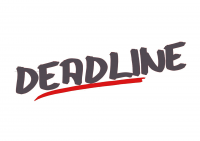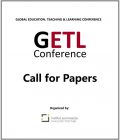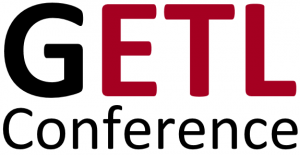12th Annual Global Business Conference 2021 invites submissions of abstracts/papers that provide insights into key research issues. Submissions should be uploaded as Word formatted (.doc or .docx) file at Paper Submission no later than August 1st, 2021. Your paper should not exceed 5.000 words and if you would like to submit only an abstract it should not exceed 250 words. Your contribution should be written in English, submitted on time and be relevant with the overall conference theme objectives.
Authors should indicate the track in which they would like to present their contribution. Each contribution can be submitted only to one track. In order to include your contribution in the conference and the proceedings at least one author per accepted manuscript must register for the conference. One person can submit a maximum of two papers.
Contributions will go through a double blind review process. Letter of acceptance or rejection will be e-mailed out within 7 working days from your submission. Acceptance of a paper implies that at least one of the authors must attend the conference and present the paper. Upon acceptance, authors can decide to publish the full paper or only the abstract in the conference proceedings.
Contributions should be:
- Single spaced throughout
- Calibri 11-point font
- Left justified throughout
- A4 size page formatting
- 2.5 cm margins on all sides
- APA citation style
Submitting only an abstract:
- Cover page (page 1) - it should include title of the contribution and author(s) information – name, affiliation, address, phone contact, e-mail. In case of more than one author indicate corresponding author.
- Body of the abstract (page 2) - it should contain title, abstract (max 250 words), key words (5 max.), conference track.
Submitting the full paper:
- Cover page (page 1) - it should include title of the contribution and author(s) information – name, affiliation, address, phone contact, e-mail. In case of more than one author indicate corresponding author.
- Title page (page 2) - it should contain title, abstract (max 250 words summarizing the main aim(s), findings and conclusions of your research), key words (5 max.), conference track.
- Body of the paper (page 3) – maximum of 5.000 words (including tables, figures, footnotes, literature and technical details if required such as mathematical proof or development).
Format:
Body of the paper (maximum 5.000 words)
Headings and sub-headings
- Major Headings - Should be numbered sequentially, left justified and bolded. The first letter of each major word should be capitalized and all of the other words should be in lower case. Two single space lines should precede and one single space should follow a major heading.
1.1 Sub-headings - Should be numbered according to the main heading, left justified and regular. One space line should precede and follow a sub-heading. Only the first letter of the first word should be capitalized.
1.1.1 Sub sub-heading - You should avoid the use of sub sub-headings unless absolutely necessary. If you use sub sub-headings they should be numbered according to the main heading, left indented and regular. One space line should precede and follow a sub sub-heading. Only the first letter of the first word should be capitalized.
Reference Citations in Text
Throughout the paper please use APA citation style.
Works by a single author (the last name of the author and the year of publication are inserted in the text at the appropriate point) – “… from theory on bounded rationality (Simon, 1945)…”
If the name of the author or the date appear as part of the narrative, cite only missing information in parentheses – “… Simon (1945) posited that…”
Works by multiple authors (when a work has two authors, always cite both names every time the reference occurs in the text.; in parenthetical material join the names with an ampersand ‘&’) – “…as has been shown (Leiter & Maslach, 1998)…”
In the narrative text, join the names with the word ‘and’ – “… as Leiter and Maslach (1998) demonstrated…”
When a work has three, four, or five authors, cite all authors the first time the reference occurs – “…Kahneman, Knetsch, and Thaler (1991) found…”.
In all subsequent citations per paragraph, include only the surname of the first author followed by ‘et al.’ (Latin for ‘and others’) and the year of publication – “… Kahneman et al. (1991) found…”
Reference list
Throughout the paper please use APA citation style. Journal article and book references are given below as examples.
Journal article:
One author:
Ku, G. (2008). Learning to de-escalate: The effects of regret in escalation of commitment. Organizational Behavior and Human Decision Processes, 105(2), 221-232.
Two authors:
Capizzi, M. T., & Ferguson, R. (2005). Loyalty trends for the twenty-first century. Journal of Consumer Marketing, 22(2), 72-80.
More than two authors:
Van Vugt, M., Hogan, R., & Kaiser, R. B. (2008). Leadership, followership, and evolution: Some lessons from the past. American Psychologist, 63(3), 182-196.
Book:
One author:
Harrow, R. (2005). No Place to Hide. New York, NY: Simon & Schuster.
Two authors:
Frank, R. H., & Bernanke, B. (2007). Principles of macro-economics (3rd ed.). Boston, MA: McGraw-Hill/Irwin.
Edited book:
Gibbs, J. T., & Huang, L. N. (Eds.). (2001). Children of color: Psychological interventions with culturally diverse youth. San Francisco, CA: Jossey-Bass.
Guidelines for authors can be downloaded here.





